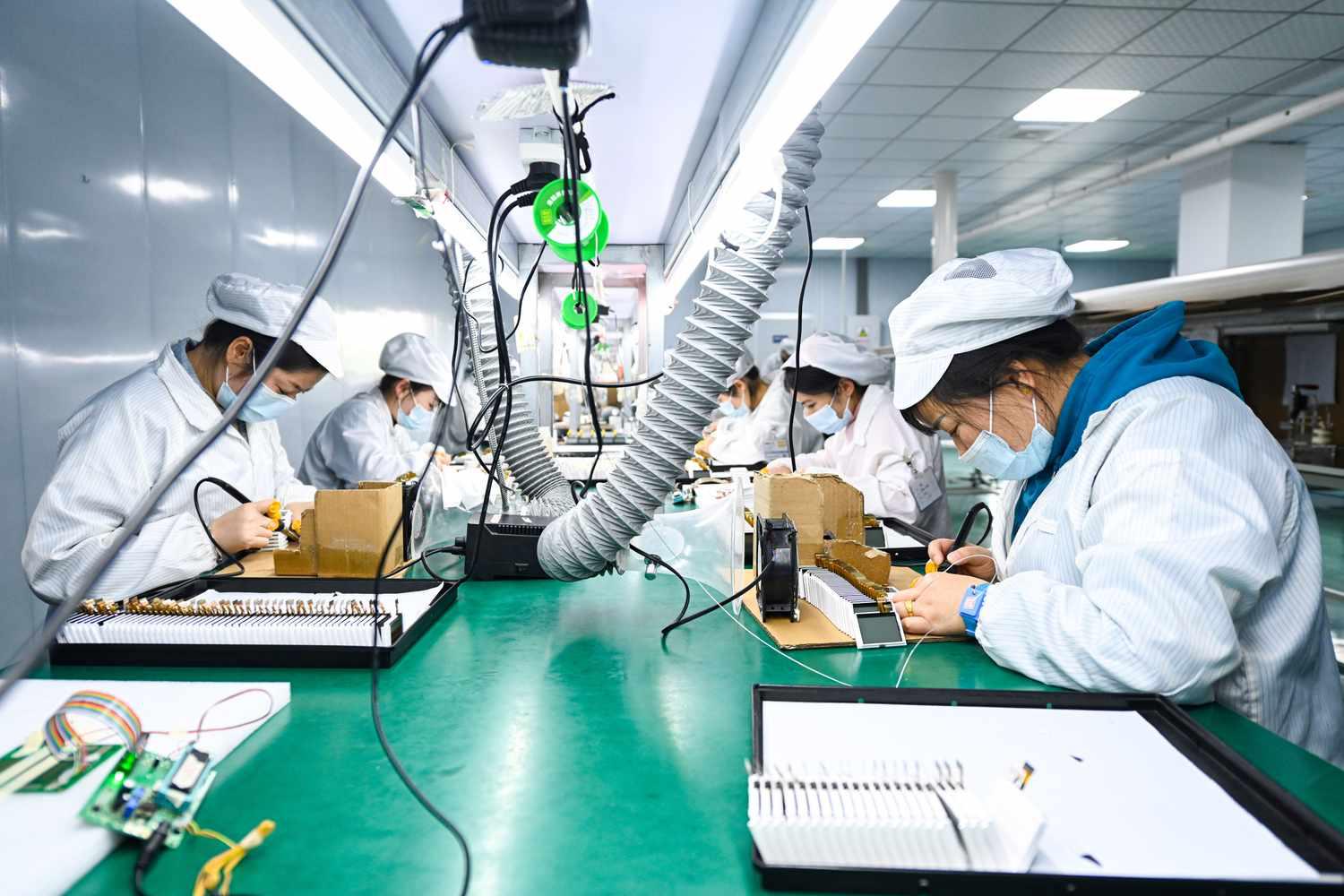The health of workers in China has come under the spotlight since the extreme six-day workweek with 12-hour days emerged. This system is widely known as 996, namely working from 9 a.m. to 9 p.m. for six days. The work pattern has sparked fierce debate both domestically and internationally due to its tangible impact on the physical and mental health of millions of workers.
This phenomenon describes the major contradiction between economic ambitions and the welfare of workers. On one hand, long working hours are considered the driving force behind productivity and global competitiveness. However, on the other hand, workers' health faces a serious risk due to continuous work pressure without adequate rest.
Extreme Work Culture in China
The culture of long working hours in China is not just a rumor. The term 996 originated from real-world practices in technology companies, startups, and even manufacturing. Workers are encouraged to work more than 70 hours per week, far above the government's official regulations that limit working hours to only 44 hours.
Although the law prohibits excessive overtime, violations in the field still occur. Many large and small companies still rely on a workforce that works long hours to meet production targets. This condition creates a dilemma: between the company's economic needs and the health of workers that has been neglected.
Cultural Roots 996
The 996 work culture emerged during the tech boom in China, when digital companies such as Alibaba and Huawei grew rapidly. The founders emphasize the employees' full dedication, even considering long working hours as proof of loyalty.
However, criticism has arisen from the public and health experts. They view this system as a form of modern exploitation that violates workers' fundamental rights. Several cases of workers dying due to work fatigue are further increasing public pressure against this practice.
Government Regulation
The Chinese government officially sets the maximum number of working hours per day at eight hours. However, supervision in the field is weak. Several new steps have begun to be taken, including a campaign to end the 996 culture. Even so, the implementation is still far from ideal because large companies have a strong influence on the national economy.
Physical Effects on Workers' Health
The health of workers who are trapped in a long working-hours system faces real risks. Research shows a direct link between excessive working hours and various chronic diseases.
While some workers are still able to adapt, many others are experiencing serious health problems. This condition has made the issue of long working hours a medical and social concern in China.
Cardiovascular risk
Long working hours increase the risk of high blood pressure and heart disease. The lack of rest and quality sleep triggers physiological stress that directly affects the cardiovascular system.
Several medical studies in China have documented cases of young workers who suffered sudden heart attacks after days of overtime. This phenomenon reinforces the view that extremely long working hours cannot be taken lightly.
Sleep Problems and Metabolism
Chronic sleep deprivation is another major problem experienced by workers. A body that does not get enough rest is more susceptible to obesity, diabetes, and other metabolic disorders.
In addition, an irregular eating pattern due to overtime worsens health. Many workers are forced to eat quickly, often consuming instant or high-fat foods, which worsens long-term health risks.
Mental and Psychological Impact
Workers' health is not only about the physical. Long working hours also take a toll on psychological aspects. The phenomena of stress, depression, and burnout are increasingly being heard among young workers in China.
Psychological studies show that those who work more than 60 hours per week tend to have higher levels of anxiety. This not only affects individuals, but also the overall productivity of the company.
Stress and Burnout
Long working hours trigger chronic stress. The pressure to meet nonstop work targets makes workers lose control of their personal lives.
Burnout has become a serious problem. Many workers admit to losing motivation, experiencing emotional exhaustion, and feeling alienated from their social environment. This phenomenon threatens the long-term viability of a career.
Depression and Anxiety
Mental disorders such as depression and anxiety are increasing in tandem with the 996 work culture. A survey of health workers, such as nurses, shows that those who work more than 60 hours per week are more prone to depression.
This condition is exacerbated by the lack of psychological support in the company. Many workers are reluctant to report mental health problems because they fear being labeled weak or not productive.
Efforts for Change and the Future
The health of workers in China is now receiving greater public attention. A series of social campaigns and international pressure forced companies to reassess their work systems.
However, change does not happen instantly. As long as the economic targets remain high, many companies still struggle to shed their dependence on long working hours.
The Role of Technology and Automation
Some experts believe that automation and artificial intelligence can reduce the manual workload. With a more efficient distribution of work, companies can maintain productivity without sacrificing workers' health.
Nevertheless, the adoption of technology also brings new challenges. There is concern that rather than reducing working hours, companies are actually using technology to demand higher output from workers.
Demands of the Younger Generation
The younger generation of workers in China is becoming increasingly vocal in rejecting the culture of extreme work. They demand a healthier work-life balance.
The phenomenon of 'tang ping' or 'lying flat' emerged as a form of protest against the excessive workload. This trend shows that workers' health has become a social issue that cannot be ignored.
The health of workers in China faces a major challenge due to long working hours that are still prevalent across various sectors. A six-day, 12-hour work pattern not only wears down the body but also the mind. Public pressure, government regulations, and the demands of the younger generation give hope for change. However, the road toward a more humane work system is still a long way off. For a more in-depth discussion on global labor trends and corporate policies, readers can proceed to the related article on Insimen.
Discover more from Insimen
Subscribe to get the latest posts sent to your email.










